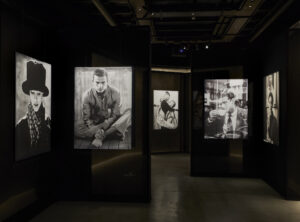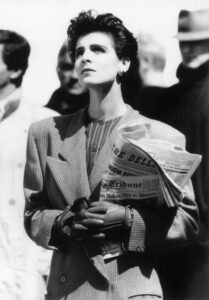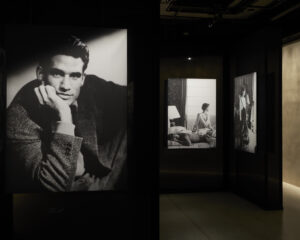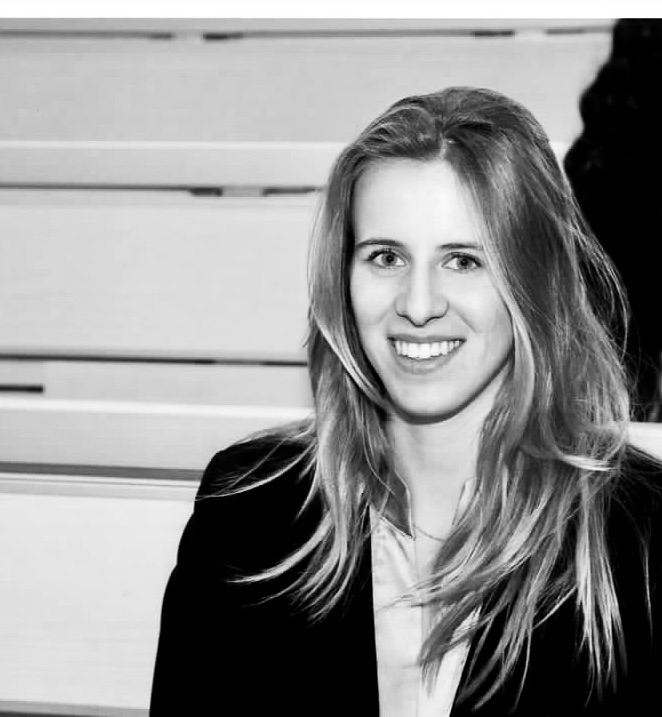«Together, in a dialogue that is always fluid and concrete, we have created life scenes, evoked atmospheres, sketched character portraits». Giorgio Armani and photographer Aldo Fallai narrate their 30-year creative collaboration in a delicate and deep exhibition at the Armani/Silos in Milan: Aldo Fallai for Giorgio Armani, 1977 – 2021.

“Aldo Fallai per Giorgio Armani 1977 – 2021”, installation view at Armani/Silos, Milano, courtesy Giorgio Armani
The partnership between the two artists dates back to the mid-1970s when they were both at the beginning of their careers: Fallai, born in 1943, was a graphic designer with a diploma from Istituto d’Arte of Florence with a remarkable penchant for photography and Armani, still far from the solo success of “Re Giorgio”, was a young freelance stylist. In his autobiography, Armani recalls theirs as «an extremely happy, albeit unpredictable encounter between a genuine Florentine and an adopted Milanese». At the time, the Piacenza-born designer was committed and determined to rewrite the rules of dress, aware of the social changes that saw both the irruption of feminism and the maturing of a greater awareness of clothing on the part of men. In doing so, Armani did not so much create a fashion as an elegant and eternal lifestyle, the poetics of which Fallai, from the outset, managed to capture and immortalise, according to which: «Elegance is not to be noticed but to be remembered».

Giorgio Armani FW 1984-85, photo credit Aldo Fallai, courtesy Giorgio Armani
The exhibition itinerary, curated by Giorgio Armani, Rosanna Armani and Leo dell’Orco, presents itself to visitors as a full-length film consisting of some 250 stills that appeared in magazines or were used in posters with a strong media impact. Arranged on the first two floors of the Armani/Silos, following a «strict scattered order», the images outline the photographer’s aesthetic, in which cinematic and neo-realist influences are combined with reminiscences of Mannerist and late Renaissance painting. This combination gives the photographs a timeless atmosphere with an intimate and abstract flavour. With delicate craftsmanship, Fallai recounts his characters – modern women with agile, sinuous bodies and educated men with lyrical, sculptural faces – where clothing becomes «a subtle complement of being».

Armani Jeans SS 1981, photo credit Aldo Fallai, courtesy Giorgio Armani
As Fallai points out, the shots «are [however] only a tenth of the work done over the years» for the various campaigns. Immediately recognisable among those on display is the portrait of Antonia Dell’Atte for Giorgio Armani FW 1984-85, where the model and muse of the designer embodies the modern image of the career woman with that veiled attitude of strength, independence, arrogance and success. With her hands gloved and crossed, the model clutches the Herald Tribune and the Corriere della Sera, while with her eyes she looks upwards, a distant point, as if contemplating the future that awaits her. The masculine-cut jacket is harmoniously modelled for the female body, giving it an authoritative character without diminishing its femininity. The actress Isabella Rossellini recounts how «all of us who didn’t want to wear low-cut, tight-fitting clothes knew that at Armani we would find a wardrobe that didn’t make us feel like sex objects». In Fallai’s shots, as in Armani’s philosophy, female sensuality is never vulgar but intelligent and refined.

“Aldo Fallai per Giorgio Armani 1977 – 2021”, installation view at Armani/Silos, Milano, courtesy Giorgio Armani
Through photography, Fallai paints deeply authentic daily life scenes, managing to transform real instants born from chance events into timeless shots, such as the photograph of the tiger cub for Armani Jeans SS 1981, taken in Palermo at the Circo Togni, where the troupe found shelter during a storm. The black and white portraits alternate with colour photographs in a sober and elegant setting capable of transporting the spectator to a dimension where the past continues to regenerate in the present. «Because style, for me [Armani], is a total expression. And reviewing all the work done today, I am struck by the strong suggestion that these shots can still emanate and by Aldo’s great ability to capture the nuances of personality».
Info:
Aldo Fallai per Giorgio Armani, 1977 – 2021
5.12.2023 – 11.08.24
A cura di Giorgio Armani, Rosanna Armani e Leo Dell’Orco
Armani/Silos
Via Bergognone 40, Milano
https://www.armanisilos.com/it/

Mariavittoria Pirera, born in 1995, has a historical-artistic education obtained with a three-year degree in History of Cultural Heritage, historical-artistic profile, at Università Cattolica del Sacro Cuore, Milan, and with a master’s degree in History and Conservation of artistic heritage, contemporary art history, at Ca’ Foscari University, Venice. She lives and works in Milan.






NO COMMENT